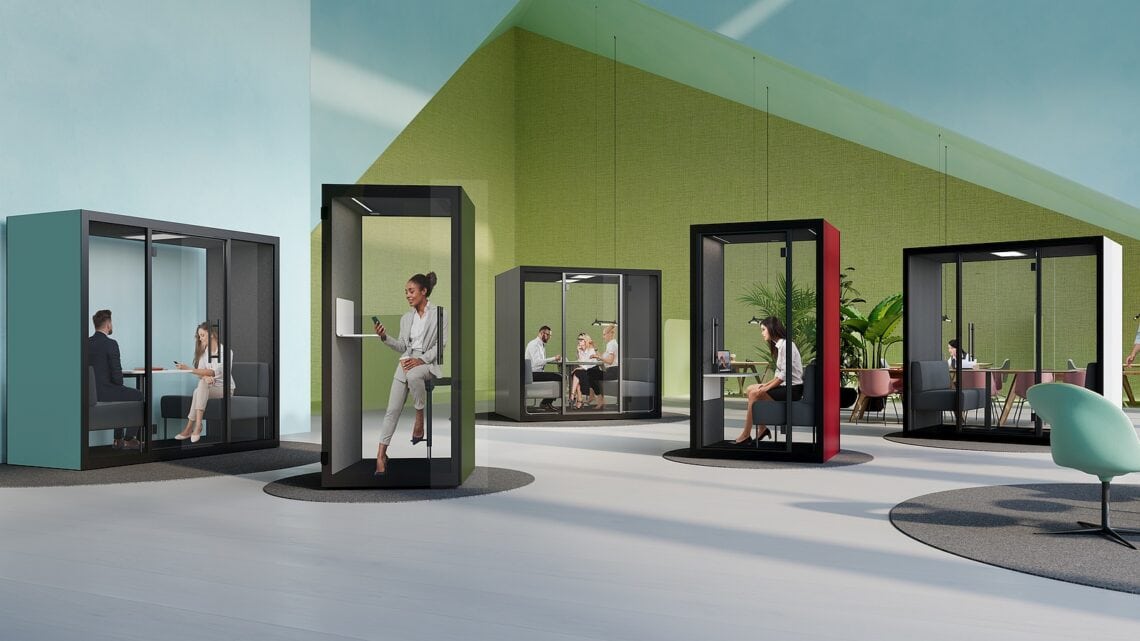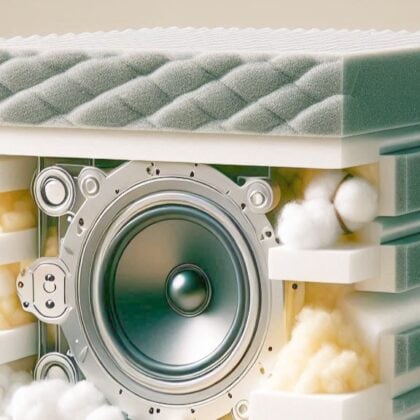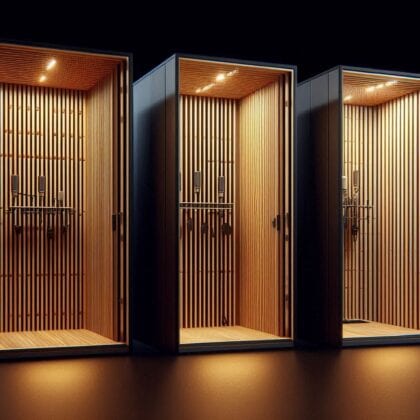Telephone and meeting boxes can now be found in many offices or are at least due to be purchased soon. So if you're thinking about upgrading your office, it might be a good time to take a look at a few acoustic cube basics.
We have therefore created the following three infographics for people who like things short and compact:
Types and activities for telephone and meeting boxes
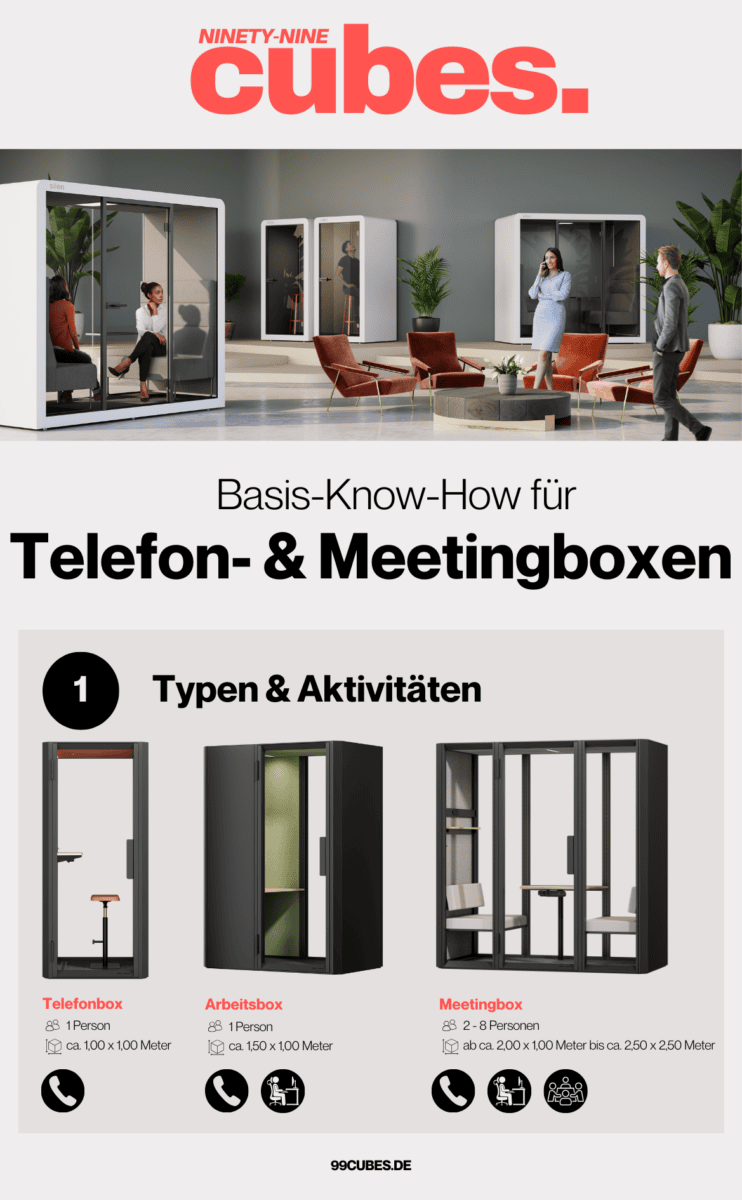
Acoustic cubes can be categorised into the following three types - these differ in their structure and the activities for which they are used. Attentive readers and surfers of our website will certainly know what we are talking about:
- Telephone boothsfor 1 person, approx. 1.00 x 1.00 metres floor space, used for telephone calls and video calls.
- Work boothsfor 1 person, approx. 1.50 x 1.00 metres floor space, use for concentrated work (as well as telephone calls and video calls).
- Meeting boothsfor 2 - 8 people, from approx. 2.00 x 1.00 metres floor space (up to approx. 2.50 x 2.50 metres), use for team meetings, concentrated work and - if all telephone boxes are currently occupied - of course also for calls and video calls.
Ventilation for telephone and meeting boxes
The air exchange in telephone and meeting boxes is ensured by built-in fans - these are similar or even identical in construction to fans in PCs and have to fulfil identical requirements: to cool or ventilate as efficiently as possible without causing a lot of background noise.
The ventilation capacity of an acoustic cube varies with the number of fans and their power. This is stated in cubic metres per hour (m³/h), but is unfortunately calculated differently from manufacturer to manufacturer:
- nominal fan power: Performance of the fan components "stand-alone" (approx. 4x higher value)
- System air flow: Actual measured air exchange in the acoustic cube (depending on installation, air resistance, circulation, ventilation slots, etc.)
Both values can be roughly converted into each other using the following rule of thumb:
System air flow = 25% * nominal fan power
The infographic tells you what fan performance you should use per person and how certain performance values should be categorised qualitatively.
By the way, you can find more to read here: Air exchange.
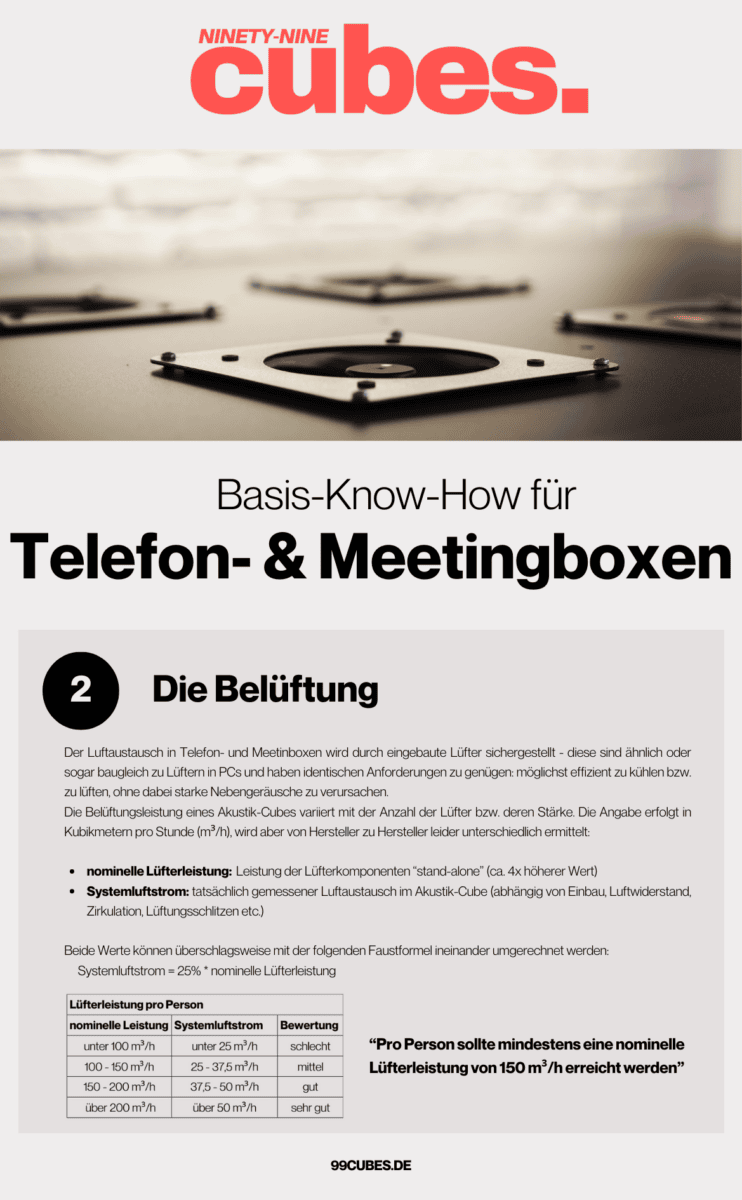
Sound insulation for telephone and meeting boxes
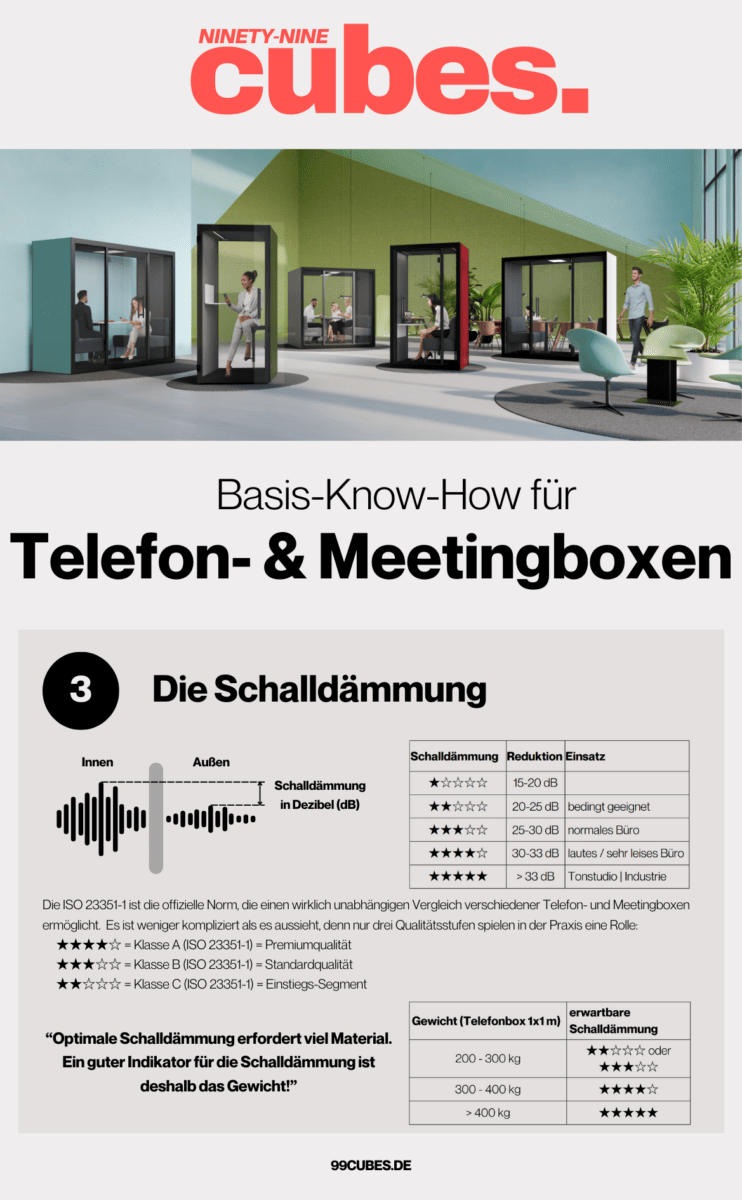
ISO 23351-1 is the official standard that enables a truly independent comparison of different telephone and meeting boxes. It is less complicated than it looks, because only three quality levels play a role in practice:
★★★★☆ = Class A (ISO 23351-1) = premium quality
★★★☆☆ = Class B (ISO 23351-1) = standard quality
★★☆☆☆☆ = Class C (ISO 23351-1) = entry-level segment
Since not all acoustic cubes on the market have corresponding standardised measured values, the following can be used instead:
"Optimum sound insulation requires a lot of material.
A good indicator of sound insulation is therefore the weight!"
More about this under: Sound insulation.
Here is an overview of all three infographics:
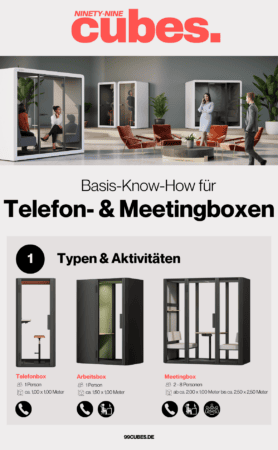
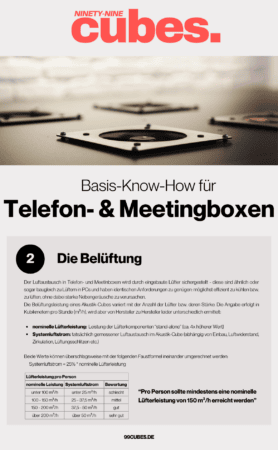
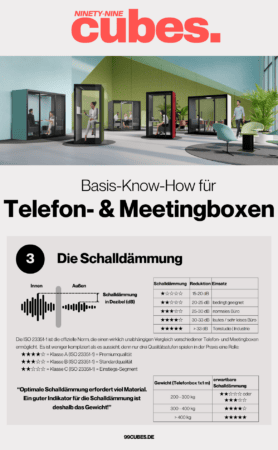
Questions, comments & personal advice
Are you missing any information or do you have any questions? Then please leave a comment below! You can also get free advice from us:

